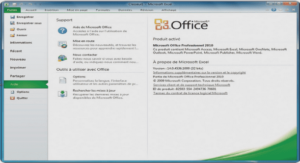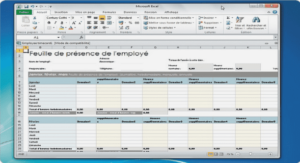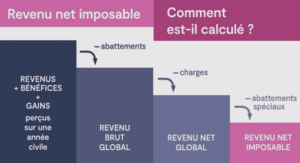The NetRexx Tutorial, tutoriel & guide de travaux pratiques en pdf.
Review of this book
What is NetRexx? Quoting NetRexx’s author, Mike Cowlishaw, « NetRexx is a programming language derived from both REXX and Java(tm); NetRexx is a dialect of REXX, so it is as easy to learn and use as REXX, and it retains the portability and efficiency of Java. » Using NetRexx you can create programs and applets for the Java environment more easily than programming in Java itself. Using NetRexx you rarely have to worry about the different types and numbers that Java requires. The « dirty » job is done by the language for you.
What is REXX? REXX is an interpreted language originally developed by IBM in 1979. REXX was designed to be platform-independent and is the procedural language shipped with the operating system both on Mainframe Systems (MVS, VM/CMS) and on Personal Systems (OS/2, Amiga). REXX is available on almost any platform as a product, or as a public domain implementation. Due to its simplicity and ease of use, REXX can be thought as a ‘Personal’ Language – practical not only for the professional programmer, but also for the occasional one. For example, you can use it to quickly test an algorithm before implementation, even when using other languages. To whom is this book addressed? This book is addressed both to neophytes and to experienced programmers starting to program on ANY system where the Java JDK is installed. Almost all the programming examples found in this book are taken from ‘real-life’ situations. Among other useful skills, you will learn how to write: a small routine for randomly accessing a 1.000.000 record file in a few milliseconds, a real client server application using sockets, a ‘pocket calculator’ with 200 significant digits, and pull-down menus using curses.
What are the covered topics?
Introduction to the NetRexx language
Numbers,Strings and Control Structures
Class and Methods
Operations on files, sockets and threads
Applets
Graphical User Interfaces
Is this a User Guide, a Tutorial or a Reference Manual? The answer is « something of all these ». In fact, the best definition is probably an « Advanced User Guide with Reference Sections ». Previous programming experience is needed in order to fully understand this book, and thus it is NOT a user guide in the true sense of the term. However, I felt it necessary to include reference information for those users who might not have the NetRexx reference book readily available to them. Some chapters also needed amplification, since they describe functions not documented elsewhere.
The NetRexx Tutorial- Preface
Preface
Introduction
This book is addressed to both professional programmers and end users who want to learn more about the NetRexx language.
NOTE: The following documentation refers to NetRexx version 1.00 and following.
*** This section is:
*** and will be available in next releases
When to use NetRexx.
This topic is likely to be a source of endless arguments (both pro and con).
This is my genuine opinion.
PROs
NetRexx is very easy to read. You can practically program in English (1)
there is only ONE NetRexx native data type (the string);
there is almost no need for special characters (like delimiters, identifiers, etc);
NetRexx has very powerful features, such as arbitrary numeric precision, parsing, easy string handling, etc.
NetRexx is not tailored to a particular operating system; the very same code can run on:
Windows 95/NT (TM),
UNIX (TM) (eg. AIX (TM), HP/UX (TM), IRIX (TM), SunOS (TM), Solaris (TM), etc.),
OS/2 (TM),
Macintosh (TM),
In fact NetRexx will run on any platform that supplies a Java Virtual Machine (JVM) (TM) (more on this later. If you are (or were) a FORTRAN, PL/I or PASCAL programmer you will probably find NetRexx closer to your ‘way-of-programming’ than any other language available for the JVM. NetRexx eases the transition for programmers familiar with « procedural » languages into the object oriented paradigm.
CONs
NetRexx is not ( or at least not exactly) Rexx, so Rexx (or Object Rexx) fans will be faced with a « transition period ». You cannot get your Rexx code immediately running in NetRexx (as you can do with Object Rexx) unless it is a very simple program.
NetRexx compiles your program into Java byte-code. The code is then very much slower, in terms of execution, than a native Object Rexx or « classic » Rexx. I’ve measured up to a order of magnitude slower. This performance problem is due to the Java byte-code running in the JVM and is not an inherant problem with NetRexx; raw Java code is just as slow!
About the examples in this book.
>From the very first chapters, I will present and discuss some ‘real’ NetRexx program atoms (i.e. code fragments (usually methods) ) that you can use in your programs after having learnt the language.
I have noticed that many ‘user guides’ present as examples, programs you will probably never use again in your life; in fact these programs are often totally useless, brought into existence only so that the author can show particular features of the language involved.
I prefer to give you something ‘real’; program atoms you can insert in your code, or programs you can run and use even after having finished with this book. The obvious disadvantage in such an approach is that some constructs may not be entirely clear, since they will only be explained several chapters further on. Please be patient, and do not be concerned about things that, at a particular point in your progress through the book, are not completely understood. You can always come back to them later.
*** This section is:
*** and will be available in next releases
Book structure
This book is divided into four parts.
Part One
(Writing simple programs)
– Basic Concepts
– Introduction to NetRexx
– Language Basics
– Operations on Numbers
– Operations on Strings
– Control Structures
Part Two (Object Oriented Programming)
– Objects, Classes and Interfaces
– Operations on files
– Sockets and Networking
http://www.netrexx.org/Tutorial/nr_2.html[11/4/2010 2:27:33 PM]
NetRexx Tutorial – Preface
– System Interface
– Threads
– Database Operations
Part Three
(Interfacing with the WEB)
– Applets
– Graphical Interfaces
– Advanced Graphics
Part Four
(Advanced topics)
– Additional Instructions
– More on Algorithms
– NetRexx for Rexxers
– Tools
– Miscellaneous
Conventions
In order to be consistent, a ‘standard’ is being followed in presenting the various code samples and running examples.




